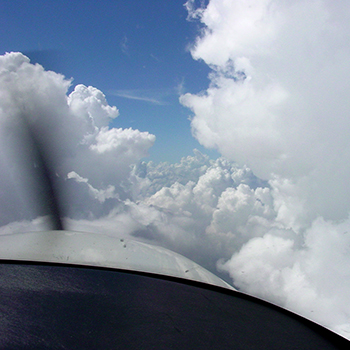Subscriber question:
"I know the limitations of my ADS-B weather for thunderstorms. But what does ATC have available these days? And how can I use that?" — Steve B.
John:
 “It depends upon who you’re talking to and how bad the storms are. However, ATC radar is designed primarily for control and separation of traffic. Weather avoidance is a secondary function.
“It depends upon who you’re talking to and how bad the storms are. However, ATC radar is designed primarily for control and separation of traffic. Weather avoidance is a secondary function.
Terminal Radars used by Approach controllers can provide a real-time presentation of precipitation returns. Using your datalink radar in conjunction with the terminal controller’s description can help you to avoid precipitation areas by the recommended margins. If nothing else, comparing where the Approach controller says a cell is and where your datalink says it is, gives you a clue as to the real-time delay in the cockpit view.
Center radars use a different system that has much of the same delay that you have in NEXRAD images. You can still use the information from ATC to avoid weather. Just be aware that you are both looking at a delayed picture.
Even though the terminal radars have a quicker update than the enroute, neither is designed for weather penetration. In times of heavy weather, the controller may have to turn down or even turn off the weather returns just to see aircraft returns, so you can’t really rely on it for weather avoidance.
Your goal and planning should be never to get yourself in a situation where you must rely on ATC weather radar to negotiate severe weather. But if it happens, knowing the capabilities and limitations of different ATC radar depictions can help you escape a bad situation.“
Assume you're flying in the clouds. The controller suggests a heading to avoid rough weather ahead. But your ADS-B display shows that heading takes you into rough weather. Who would you trust?
